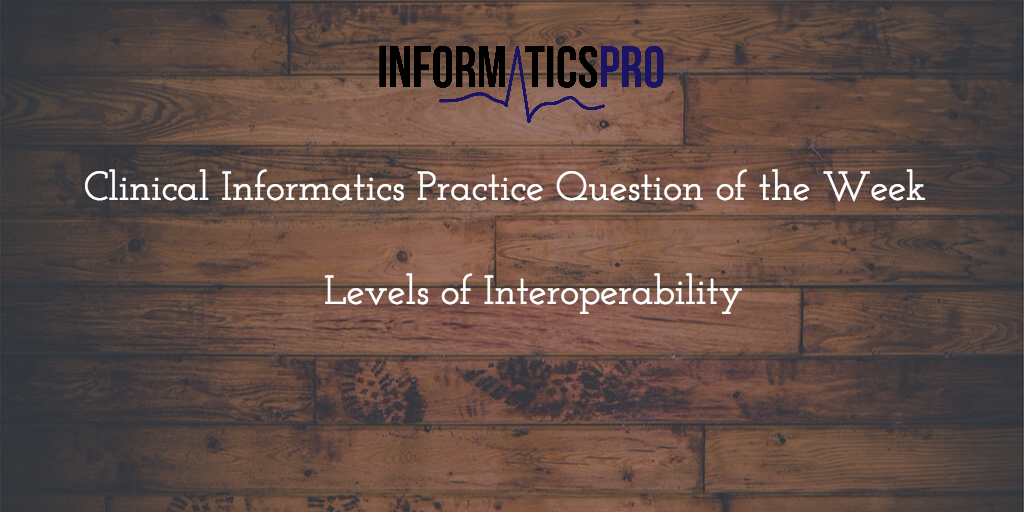Only a little bit of time left until the exam. Are you ready!?!
This week’s practice question deals with the levels of interoperability for clinical information systems.
It fits under the topic of “Clinical Data Standards” – a topic area that makes up a majority of the test’s questions.
As I’m sure you already know, interoperability is the extent to which clinical information systems can exchange and interpret data. You also probably know that the extent to which these systems can exchange and interpret data varies. Sometimes wildly.
If we go any further into detail, we may give away the answer to the question, so let’s get into it.
Question
An EHR is able to pull in the latest lab results on a patient from the hospital’s Laboratory Information System and display them to the clinician. The lab results formatting are retained, although the CDS is not able to read the results, so the physician must interpret them. The interoperability level of this system would best be described as:
A. Foundational
B. Functional
C. Structural
D. Semantic
Answer and Explanation
The extent of interoperability can be classified into three different levels. These levels are:
- Foundational
- systems are able to exchange data but that data does not have to be able to be interpreted by the receiving system.
- Structural
- systems can exchange data while maintaining structural interoperability of the data being exchanged. Data is unaltered but may be “read-only”
- Semantic
- systems can exchange data that can be read, understood, and used by both systems
In this example, the level of interoperability would be semantic if the CDS or EHR was able to read, understand, and interpret the lab results in order to provide decision support, recommendations for order sets, alerts with important information, or other relevant information.
This system is above the functional level, as we know the data can be exchanged between the systems and used by the clinician. There is no indication that the data is somewhere in the system but is not interpreted.
Because the data can be read between applications, is able to be interpreted by the receiving system, but may not be bi-directional or understood by other systems, this means this system would likely be described as a structurally interoperable system.
Therefore, C. Structural is the correct answer.
More Learning
We have a practice quiz you can take for free. It can be found under the products menu item. In addition, we offer 250 practice questions that can be found through learn.informaticspro.com.
Additional Reading
http://www.himss.org/library/interoperability-standards/what-is-interoperability
